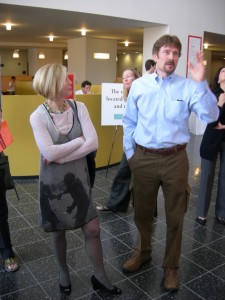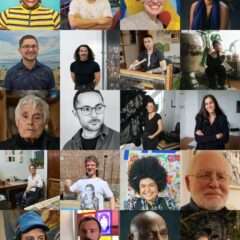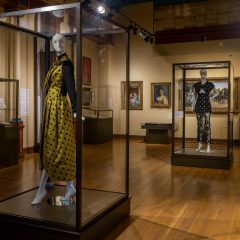I joined a group of InLiquid.com members and friends of Drexel University this morning for a tour of InkNotInk, a large and fascinating exhibition filling four spaces in Drexel’s Bossone Center and Nesbitt Buildings (on view through May 9, 2009).
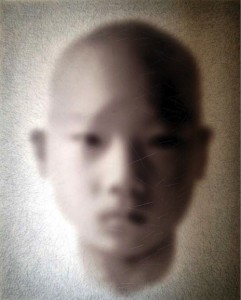
The tour was given by Abbie Dean, a Drexel trustee and Joseph Gregory, professor of art and art history, who had traveled to China and brought the exhibition to Philadelphia under the auspices of Drexel’s Antoinette Westphal College of Media Arts & Design.
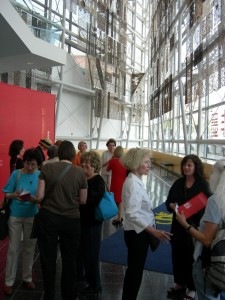
The Chinese Communists attempted to eliminate traditional Chinese art because it had been the province of the upper classes. They physically destroyed masterpieces of the past and rejected its traditions within artistic education. This was especially true of the tradition of ink painting associated with the literati, although they did not reject the associated and possibly more valued tradition of calligraphy; Mao was proud of his calligraphy, which appeared on the masthead of the People’s Daily, the organ of the Chinese Communist Party.
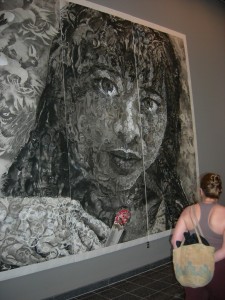
InkNotInk, organized by the Shenzhen Art Museum, explores the persistence of a native tradition of ink painting within an increasingly international Chinese art scene. This search for the native artistic core has characterized many countries facing new regimes (think of the German Romantics turning to their medieval past, or the National Socialists rejecting the Internationalism of flat roofs in favor of gables). The exhibition is broad in its compass, including painting, sculpture, photography and video, although there’s a preference for work on rice paper, but of dimensions unimaginable to painters of the past. No handscrolls here – the works range from very large to billboard size.
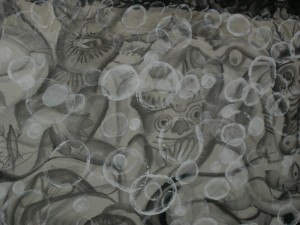
The exhibition is both appealing and challenging in its range and consists largely of artists not seen before in the U.S., except for expatriate Wenda Gu whose work of international flags made from hair of the various nationalities was added for the Drexel showing. As with the progression of exhibitions since Magiciens de la Terre (Paris, 1989) which have brought third and fourth-world artists to Europe and the U.S., it’s hard to know just what background the artists have. Do they know the Western work their art resembles first hand, have they or their teachers traveled, have they seen the work in magazine reproductions, or not at all? I always worry that the art becomes primarily a Rorschach test for the viewer.
Still, the artists all had wonderful control of their media and the range is broad enough to interest everyone; there are realistic renderings and abstract work, conceptual and post-modern work, minimalist drawings, and various uses of digital and photographic imagery. Yan Yin Hong’s virtuosic, monumental self-portrait was made up of many smaller drawings, reminding me slightly of Pavel Tchelitchew’s Hide and Seek (with the details looking like Judith Schaechter’s recent work). Some of the figurative ink drawings resembled George Grosz’s watercolors more than any traditional Chinese painting, and an animated video was uncomfortably close to William Kentridge’s work. But Dai Guangyu’s photographs of calligraphy drawn upon water are an interesting twist on the old men at Beijing’s Summer Palace who do calligraphy with water on the pavement, using mop-sized brushes; at the same time the photographs mine the particularly-Chinese reverence for the artist’s essence as manifest through calligraphy.
As a footnote, Abbie Dean was wearing an extraordinary dress that it was impossible for an art historian not to notice; it was decorated with images of rock-throwing crowds in Paris in 1968. I guess if tragedy is recycled as farce, political dissent returns as fashion.


